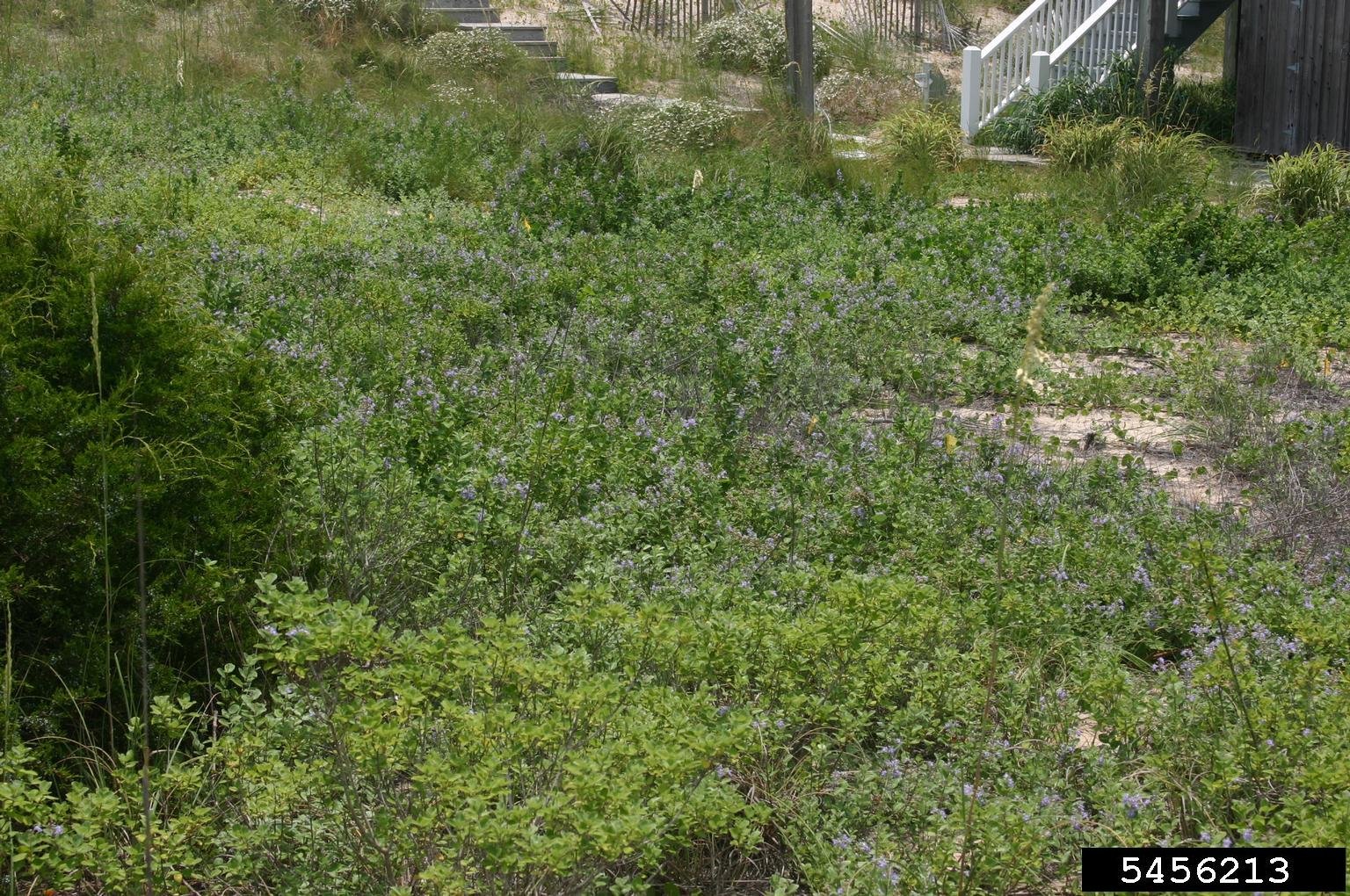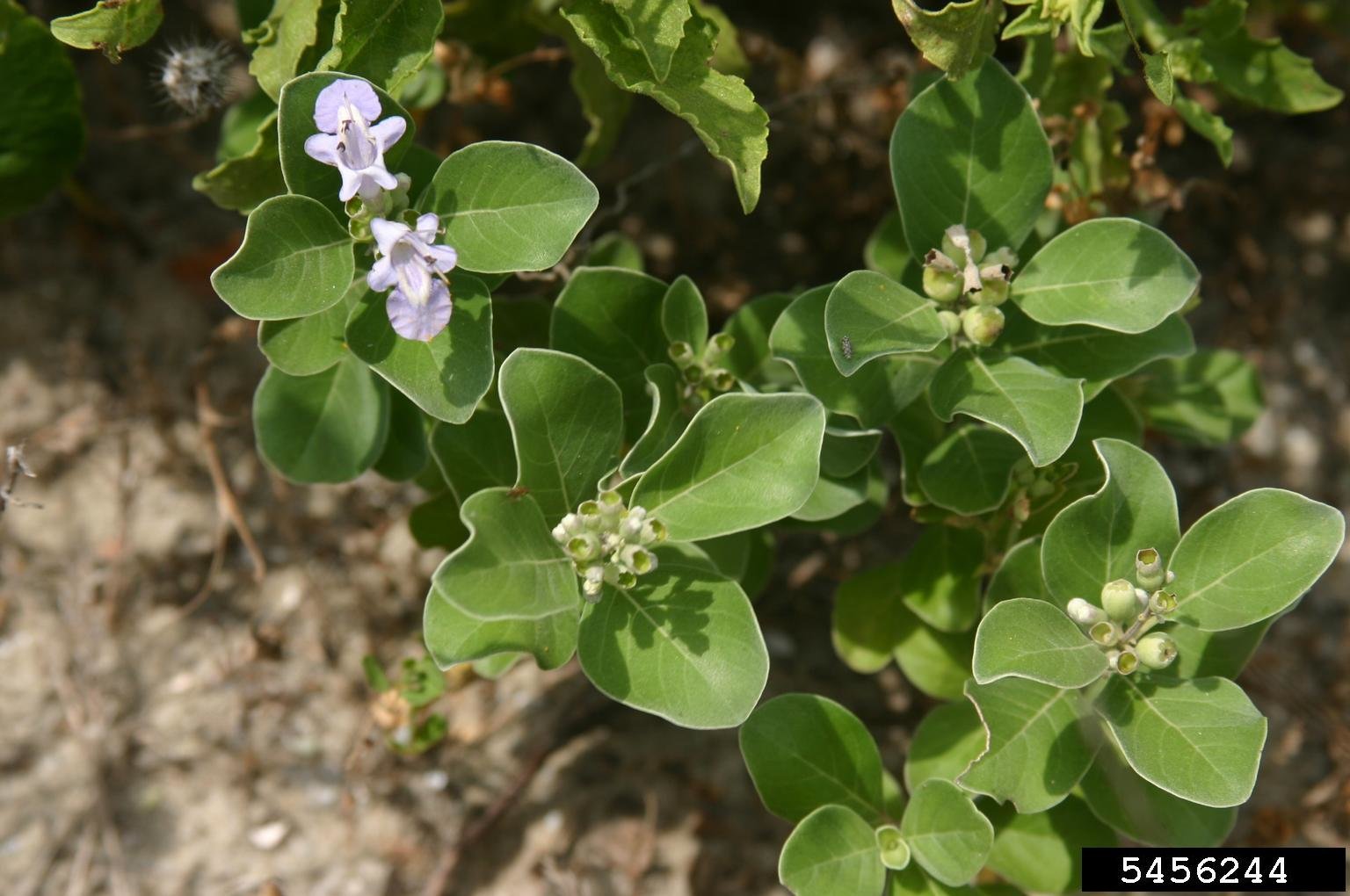Early Detection Invasive Plant Species of Virginia
Beach Vitex
(Vitex rotundifolia)
What's the harm?
Through vegetative reproduction and seed production, beach vitex rapidly forms large monocultures and crowds out native dune species, including the rare sea beach amaranth (Amaranthus pumilus), which is federally listed as threatened. The thick cover of beach vitex can hinder efforts of loggerhead sea turtles to lay their eggs and prevent hatchlings from making their way to the sea.
Despite the fact that it was introduced for the purpose of erosion control, there is evidence that beach vitex is not as efficient for dune building and stabilization as it does not trap wind-blown sand as well as native species. Areas of sand dunes where beach vitex has become the dominant cover have been observed to have lower profiles than those dominated by native species, such American beach grass or panic grass.

What is it?
Beach vitex is a sprawling, salt-tolerant, perennial shrub, which typically grows to a height of 1.5 to 3 feet.

How did it get here?
The natural range of beach vitex extends from Japan to Australia and from Hawaii to India. It was introduced to the coastal southeastern United States in the 1980s-1990s to help control beach and dune erosion.
Where is it now?
As an obligate seashore shrub, beach vitex grows along rocky and sandy shorelines and coastal areas up to fifty feet above sea level. Globally, it is present in both tropical (where it is evergreen) and temperate (deciduous) climatic regions.
What's being done?The City of Virginia Beach and the City of Norfolk, in partnership with Virginia Departments of Agriculture and Consumer Services and Conservation and Recreation, worked with willing landowners to remove beach vitex from their properties and saftely dispose of it. Citizens are asked to learn to recognize beach vitex and report it.
Landowners are encourages to use native plants adapted to coastal dune habitat that provide the best dune stabilization. Recommended species include: sea oats (Uniola paniculata), American beach grass (Ammophila breviligulata), bitter panicum (Panicum amarum), seaside little bluestem (Schizachyrium littorale), and hair-awn grass or purple hairgrass (Muhlenbergia capillaris). For more native plant suggestions, see the DCR Native Plant Finder >>
How do I report an invasive species?
If you find this or other early detection species, go to
our reporting page here >>
or call 804.786.9112 to report your discovery.
How can I learn more?
Read more about beach vitex here >>
Image/Illustration Credits
University of Georgia, Bugwood.org
 Virginia Invasive Species
Virginia Invasive Species